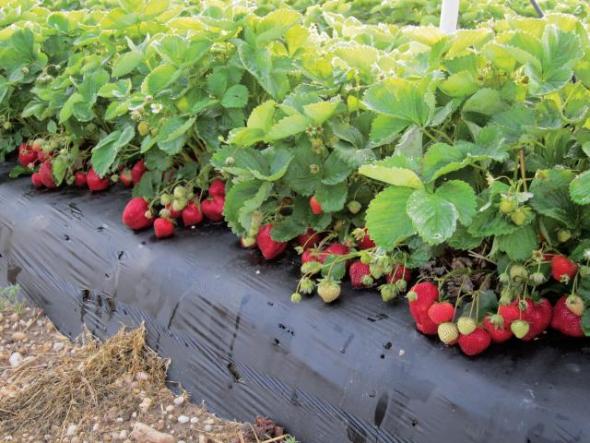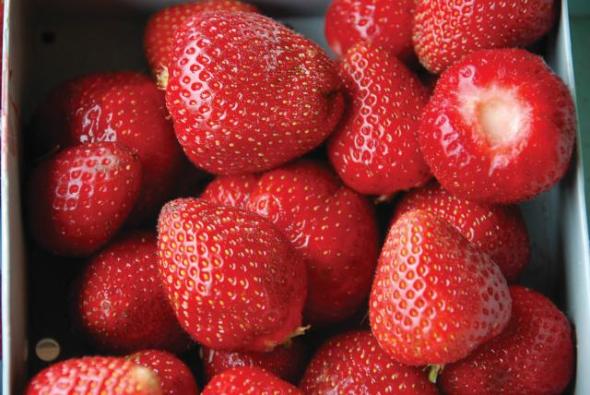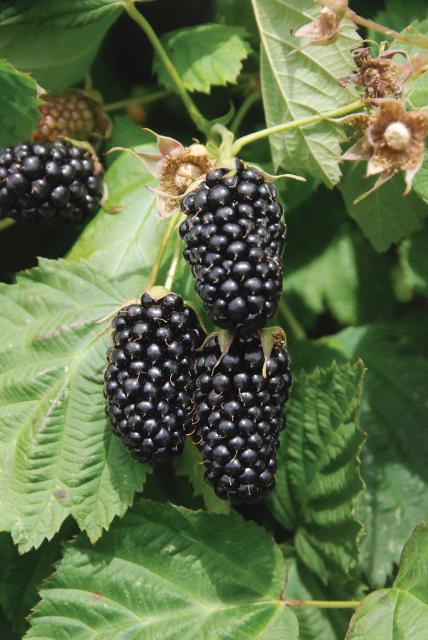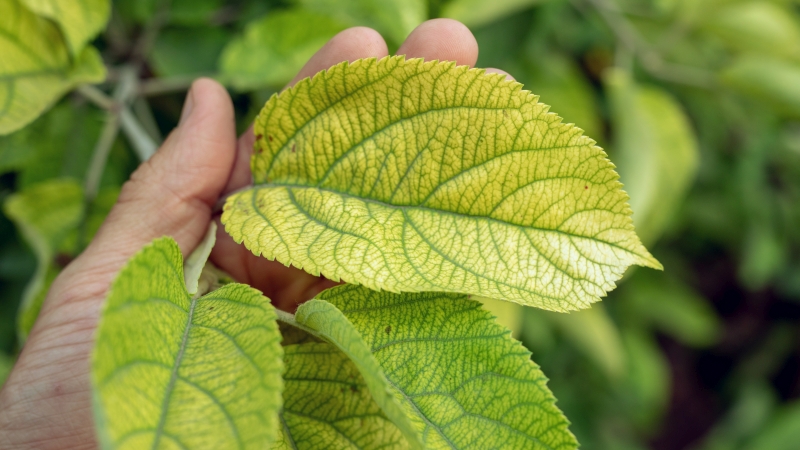Three Promising New Berries From USDA

Flavorfest (Photo credit: Kim Lewers, USDA-ARS)
USDA breeding programs in Maryland and Oregon have introduced three promising berry cultivars that could work well for growers both East and West. Here’s what you need to know about Flavorfest and Sweet Sunrise strawberries and Columbia Star blackberry.
FLAVORFEST
Flavorfest, a new release from the USDA-Agricultural Research Service (ARS) breeding program in Beltsville, MD, led by Kim Lewers, is a mid-season high-yielding strawberry variety with large, firm berries.
Staying true to its name, key features of this variety are its flavor, as well as its resistance to anthracnose fruit rot. The shape of the strawberry is “overfull,” according to Lewers.
“It’s like each berry is all puffed up trying to get your attention … as if it’s trying to tell you it’s bursting with flavor,” she says.
Flavorfest is best adapted to growing conditions in the Mid-Atlantic, Northeast, and surrounding areas. The berry performs well in both plasticulture and matted row systems. Shawn Wright of the University of Kentucky said it grew well for him in an annual plasticulture system and perhaps could work well in Ohio or western Virginia.
Flavorfest also does well in cold storage. It will develop some botrytis after a week, but if fungicides are used, very few berries will show symptoms.
“Unlike some varieties, it does not change physiologically in cold storage. Some varieties turn dark and soft in even a day of storage, but Flavorfest does not,” Lewers says.

Sweet Sunrise (Photo credit: Chad Finn, USDA-ARS)
Flavorfest is widely available to commercial growers. Wright encourages you to try this variety because of the excellent flavor, color, and shape of the berry, and yields that were equivalent to Chandler in his trials.
“I would suggest growers contact their favorite nursery to help them obtain Flavorfest plants,” Lewers adds.
SWEET SUNRISE
Sweet Sunrise is a new strawberry variety from the USDA-ARS Horticultural Crops Research Unit in Corvallis, OR. The unit’s breeding program is led by research geneticist Chad Finn. This cultivar, developed primarily for the process berry market, has a good, intense color internally and externally, as well as a good flavor.
Finn has trialed the variety for the past few years, and says he has seen it produce the highest yields in every trial compared to other varieties. The plants lasted about three years. Although the yields declined a bit over the years, the size of the berry didn’t drop as dramatically as the others.

Columbia Star (Photo credit: Chad Finn, USDA-ARS)
Sweet Sunrise is ready to harvest one week earlier than industry standards like Tillamook and Totem. It is also a large berry which helps make picking more efficient.
Since it does harvest a week early, obtaining labor that early might be an issue.
Finn says there’s no reason it wouldn’t work in the East although an annual plasticulture system is typical in the East while a perennial matted row system is typical in the West. Western growers face a lot of virus pressure and Sweet Sunrise proves to adapt well to those pressures.
This variety is available through distributors in the West and is available to ship to the East.
COLUMBIA STAR
If you’re looking for a strong thornless blackberry variety, Columbia Star — also from the Corvallis program — may be a great option for you. Black Diamond has been the industry standard for the last decade or so with a high yield and good quality, but the consumer market was looking for a thornless variety that had the same characteristics of Black Diamond. Finn says Columbia Star is equivalent to, if not better than, Black Diamond. The variety produces high yields and is of high quality for processing and short distance fresh buys. In a blind taste test, it scored well with flavor and aroma, as well as a puree.
In its second year of harvest, a major processor said it “fit the bill,” giving confidence to a number of growers to try this variety. Finn says the number of plants sold jumped to more than 400,000, which is about 500 acres.
Finn cautions those in the East to “try it carefully,” as Columbia Star is not very cold hardy. If you’re in an area where the temperature doesn’t get below 10°F, it’s worth a shot, he says.









